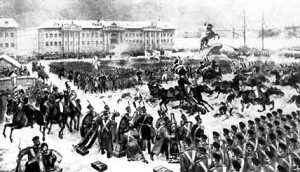Slavery in the United States and serfdom in Russia were simultaneously the dominant sources of production in their respective nations. The institutions differed greatly in their economic and political motivations and their societal repercussions, but according to Peter Kolchin’s book Unfree Labor: American Slavery and Russian Serfdom, both systems developed from a high land to population ratio. Many social scientists have proposed the idea that compulsory labor is often borne from such a ratio coupled with an expansion of agricultural production. The lopsided ratio creates a labor shortage, while the agricultural expansion creates an increased demand for labor, pushing those on top of society to force those below to meet this labor demand. Despite similar catalysts to the start of their development, serfdom and American slavery had disparate processes and patterns of evolution.
Russian serfdom emerged slowly over a span of three centuries. The precursor to the serf was the unfree Russian known as a kholop. The kholopy were a diverse group, many of whom were skilled artisans or high-status administrative figures. They also constituted only ten percent of the population while serfs, at the height of serfdom in Russia, constituted over half of the population. During the sixteenth century, the number of skilled unfree people decreased and the state began limiting the freedoms of peasants. Much of the blame for the development of serfdom can be placed on the system of pomest’e. The land gifted to nobles under this system required peasants to work it. When Ivan IV’s reign of terror coincided with an economic collapse, many of these peasants began fleeing and leaving tracts of land fallow. Powerful landowners beseeched the state to aid in tying their labor to their land. At the turn of the seventeenth century, the state responded by revoking a peasant’s right to move to different landholdings, and in 1723 Peter the Great officially delegated all slaves or kholopy into the rank of serf.
The English settlers in the American colonies faced a similar shortage of labor due to their plentiful land but small population. They did not turn immediately to the use of slaves, opting instead for indentured servants, usually from the British Isles. Unrest in Britain made the prospect of temporary indentured servitude in a new land preferable to staying at home. The conversion to widespread use of slavery occurred far more rapidly than did the leap from kholopy to serfdom in Russia. Economic prosperity between 1680 and 1730 allowed more landowners to purchase slaves, which were initially far more expensive than indentured servants. Slaves were preferable as a long term investment because they could reproduce other slaves, unlike the servants who were obligated to a master for a finite amount of time. One of the largest discrepancies between American slavery and Russian serfdom was the racial component. The institution of slavery overtook indentured servitude so quickly partially due to the ease with which an escaped slave could be identified by his skin color and then returned. As the system became an entrenched and irreplaceable part of the American economy, it would help develop a social hierarchy based on race. In Russia, serfs differed from their master only in wealth and rank, indicating a social hierarchy based on birth. These systems of forced labor both served to secure seemingly necessary agricultural manpower, and despite differences in enactment and evolution, both played pivotal roles in the development of their nations.
Works Cited
Kolchin, Peter. “The Origin and Consolidation of Unfree Labor.” In Unfree Labor: American Slavery and Russian Serfdom. Cambridge: Harvard University, 1987.



